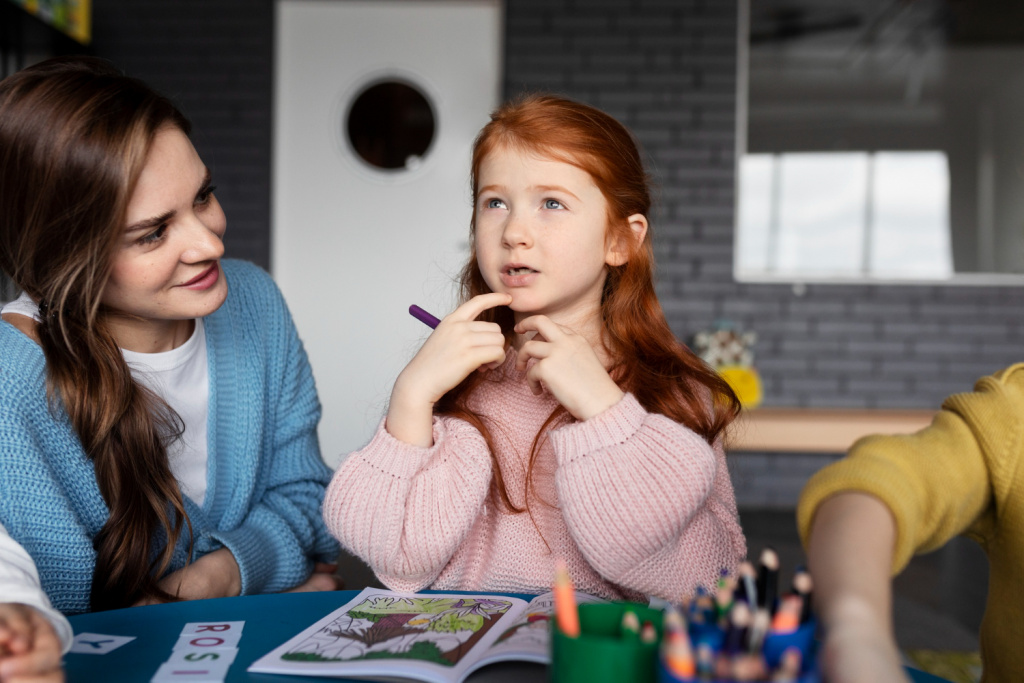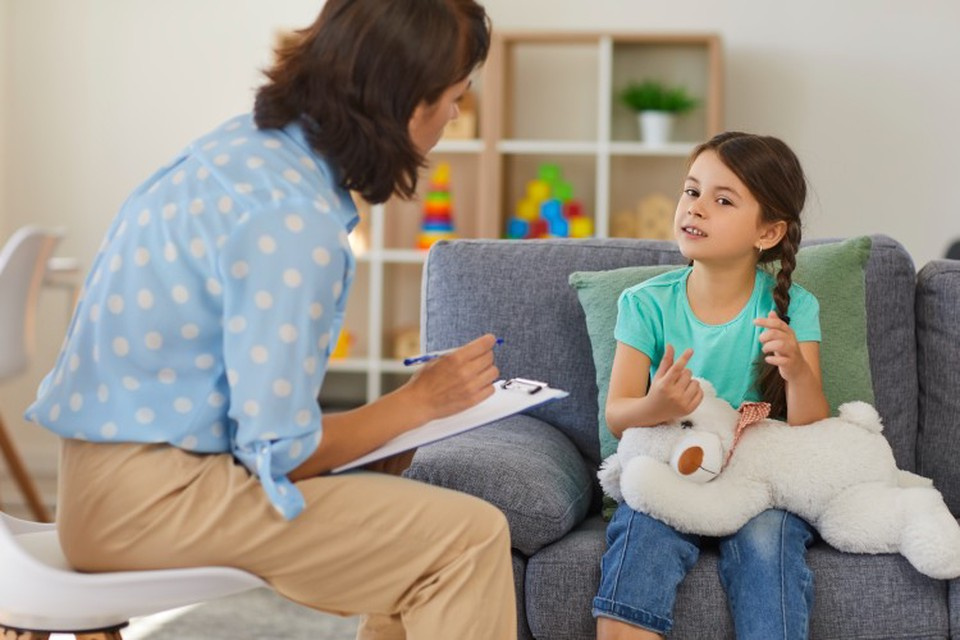
If we were to go back 10 or 15 years and ask teachers how important oracy was in their teaching, I’m not sure many would have rated it especially highly. Fast forward to today and I’m certain few teachers would be unaware of how crucial oracy is, not only as an essential gateway to literacy and the wider curriculum, but also as a necessary life skill that allows children to communicate and socialise effectively.
Increased professional awareness of the importance of oracy is the good news. The bad news is that oracy has become more salient as an issue partly because speech and language skills in children have deteriorated.
Two years ago, the charity Speech and Language UK estimated that one in five children – almost two million – were not at their expected level for language and communication by the end of Reception. Two years on, we commissioned pollsters YouGov to ask teachers if those problems were as widespread today and, if they were, what was causing them.
Unfortunately, the results in our Lost for Words survey suggested that if anything, the number of children with poor communication skills is on the rise. Half of primary school teachers said that up to one in five of their students had speech and language issues, and a further third said up to two in five had these issues. Teachers believed increased screen time, less reading outside of school and reduced conversation at home are all contributing factors.
Almost all the teachers surveyed said the problem had worsened in the past five years and that communication difficulties could affect any child, regardless of background – even though they believe the public tends to associate them, wrongly, with disadvantaged children.
Schools are grappling with the consequences every day. Speech and language issues fundamentally affect learning, behaviour, wellbeing and attendance. So it’s not surprising that nine in ten primary teachers told us that the problem has made teaching more difficult.
What, then, can be done to tackle the problem, and how can schools best equip teachers to support their students?
Early assessment is crucial
‘Early identification is absolutely critical,’ says Martin Galway, Head of School Programmes at the National Literacy Trust. ‘Without it, children face an uphill battle – not just in school, but in their broader development. Research has shown that unidentified language difficulties are linked to higher rates of school exclusion, absenteeism and even poorer mental health outcomes.

‘In contrast, when speech and language needs are identified and supported early, children are far more likely to develop strong literacy skills, engage positively with learning and build confidence in their communication abilities.’
Speech and language problems often become apparent as soon as children start school, but that’s not always the case. ‘With a lot of our children, it can be sentence structure,’ explains school leader Genna Hitchin. ‘They speak of themselves in the third person: ‘Fred drinks water’, rather than ‘I drink water’. And tenses tend to be inaccurate – they often speak in the present tense.’
Genna, who is Head of School at Palace Fields, a one-form entry primary school in Runcorn, Cheshire, is describing the type of speech and language problems she and her colleagues regularly encounter. Speech sound development issues are easy to spot, she says, but identifying processing problems – if a child can’t understand multi-step instructions because there’s too much information to process, for instance – can be harder.
‘For some of our children, any difficulties they might have don’t present immediately, and it takes time to see any gaps between them and their peers. Others, particularly girls, can be very good at masking problems, which sometimes don’t become apparent until Key Stage 2.’
Genna Hitchin, Head of School at Palace Fields
Genna’s school screens children as soon as they join with WellComm – a complete speech and language toolkit, from screening to intervention. ‘The Big Book of Ideas that comes with the toolkit provides interventions to help children get to the next stage,’ says Genna. ‘Many can be applied in class, which means children don’t have to be removed for a set intervention. And it helps with any referrals for speech and language, or looked-after kids, or those on a personal education plan.’
Mistaking the root cause of the problem
It’s not just that speech and language issues can be hard to spot – they can also be misidentified as cognitive or behavioural problems. Nearly half of the primary teachers in our survey said that it was easy to mistake speech and language issues for reading and maths problems.
Genna agrees: ‘In maths reasoning questions, for instance, there are a lot of processes to go through. If a child doesn’t have speech sound difficulties, people may assume that it must be a cognition and learning problem, though actually it could well be a processing of information problem. And the exasperation of either not being understood when speaking or not being able to process quickly enough and plan your speech in a conversation can cause outbursts because children become frustrated.’
Rachael Symons, Reading Lead and Primary English Lead at the trust Cabot Learning Federation, points out that an inability to communicate verbally will often manifest in other ways: ‘If children struggle to communicate effectively and appropriately with their voice, many will communicate in other ways, often through challenging behaviour, which can be anything from annoying pencil-tapping to more extreme chair-throwing or fighting with other children.’
Feeling heard and listened to
Addressing speech and language issues and embedding oracy isn’t just about enabling children to access learning – it’s also about ensuring that they can fully participate socially and be happy in school.
‘We know that enabling young people to have a voice and have that voice heard supports the development of their sense of status, belonging and esteem,’ says Rachael. ‘So it’s crucial that all students at all ages be taught to communicate effectively, not just about different subjects but about their emotions and feelings too.’
Giving students the space, increased time and freedom to talk can be counter-intuitive for many teachers, but it will ultimately help them to develop a crucial life skill – and as Rachael points out, the results can be impressive.
‘One of our schools that has gone from struggling to now thriving, credits the development of oracy across the curriculum with playing a significant part in that improvement. The principal says oracy has been ‘transformative’ for his pupils. Not only has behaviour dramatically improved, but so have attendance and outcomes. Pupils want to attend that school because they feel valued and heard. They know that they have a voice.’
Rachael Syons, Cabot Learning Federation
Embedding effective oracy strategies
It would be a mistake to imagine that oracy is merely about ‘letting students chat’ or that teaching it doesn’t have to be structured and included as part of continuous professional development. Genna, for instance, says it’s important that teachers model speech and correct mistakes, but that they should also be patient too.

‘Correct grammatical errors and bounce the words back so children can always hear them spoken correctly. But let them finish, don’t speak for them, even if it’s a long-winded story or you know what they are going to say, and never assume they will know a word,’ says Genna. ‘I remember doing a maths lesson and the example given was the number of chairs laid out for a pantomime, and about five of the children couldn’t answer the question because they were too caught up not understanding what a pantomime was…’
Rachael says oracy is embedded in her trust’s CPD and points out that teachers need to know what effective oracy teaching looks and sounds like if they are to develop it for the students they teach. ‘Oracy is woven through our teaching and learning frameworks. Many of our schools work with outside agencies like oracy education charity Voice 21. But all of them have an oracy lead and we have a trust-wide oracy network, which has regular meetings where research and good practice – and the challenges schools face – are shared, explored and discussed.’
Genna’s school has also adopted a structured approach, with oracy being one plank of an all-encompassing literacy and reading strategy. Palace Fields is part of charity Right to Succeed’s Cradle to Career initiative, which works in areas of high deprivation and aims to improve literacy among children and give families easy access to the support they need.
Alongside WellComm, the school uses the New Group Reading Test (NGRT) and Pupil Attitudes to Self and School (PASS) measure in Years 5 and 6 to give teachers a whole view of each child and help them to provide personalised support. NGRT identifies and responds to reading skills and monitors progress, while PASS provides evidence of (and support for) non-academic barriers that may impact learning and engagement in school.
Rachael says working with third parties like Voice 21 has paid real dividends. ‘Across our trust, if we were to average the attendance of our students at schools that have engaged with Voice 21 over the past few years and compare it to the trust average, those working with Voice 21 would definitely have higher attendance. That’s not to say there is a direct causal link between oracy and attendance, but there is a correlation.’
Addressing teacher reservations
Although teachers are increasingly aware of the importance of communication skills and understand that a decline in oracy has an inevitable knock-on effect on literacy, our survey also found some reservations about teaching it. In particular, eight in 10 primary teachers worried that if oracy became an official target, other learning priorities could suffer.
Such concerns are understandable given how many targets schools have to grapple with. But it helps to view oracy as an essential component of literacy rather than as an alternative or somehow separate to it.
In Rachael’s experience, the more teachers become skilled in teaching and talking about oracy, the more any reservations tend to diminish. ‘Teachers tell us that oracy strategies have helped students complete higher-quality, extended pieces of writing. Students collaborating, interacting with peers, sharing different perspectives on the same text and being able to talk through ideas before putting pen to paper have all been incredibly useful.’
Even beyond that, the use of oracy makes reading a sociable activity. ‘Pupils are able to share what they’ve learnt, what they have enjoyed, what they have agreed and disagreed with in what they have read – which is powerful and empowering,’ says Rachael.
One example in particular has stayed with her. ‘Many years ago, I visited one of our schools’ library lessons, which at the time were conducted in silence. Afterwards, I asked one boy what his favourite part of the lesson was. “The end,” he said, “but not because it’s the end of the lesson but because when I walk out of the library, I can finally talk with my friends about what we’ve been reading.”
‘Because of that feedback, library lessons at that school now incorporate time for students to share their thoughts and ideas without needing to wait until they are outside. We should never forget that being able to express and share views about how a text has made us feel and think is really powerful and important for students of all ages.’
Georgina Cook is a Language and Literacy Specialist at Renaissance, incorporating GL Assessment. She has a Master’s degree in English Literature and has taught literacy and English across a variety of secondary schools in the East of England.
Register for free
No Credit Card required
- Register for free
- Free TeachingTimes Report every month